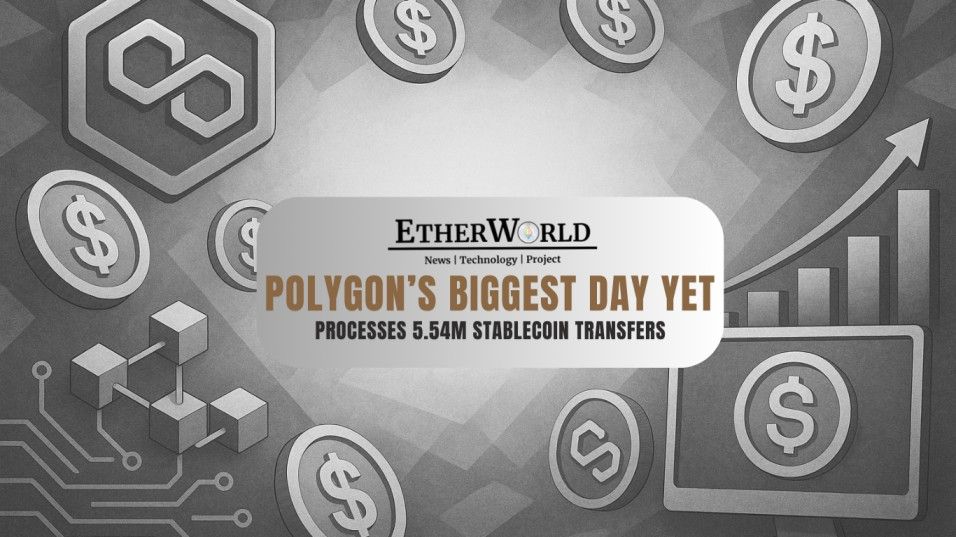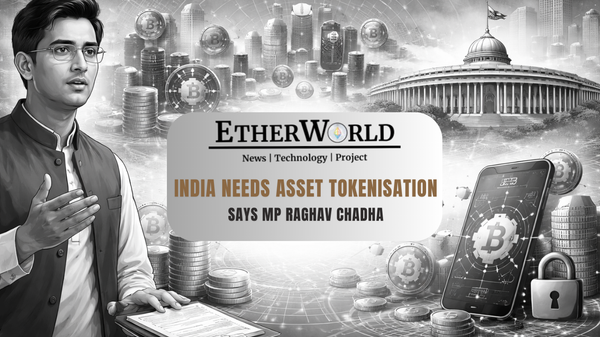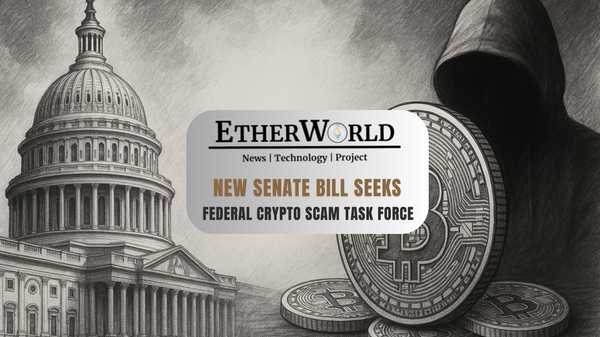Stablecoins have often been described as the most practical use of cryptocurrency, yet their real role in everyday finance has stayed mostly out of public view. Yesterday gave us a different picture.
Polygon processed 5.54 million stablecoin transfers in a single day, the highest ever recorded on the network. At the same time, Revolut, a wildly popular digital finance app in Europe and other regions, surpassed 775 million dollars in total value moved through Polygon based transactions.
- A Record Day for Stablecoin Transfers
- Fintech and Users Fuel the Growth
- What This Surge Means for Payments
- What Comes Next for Stablecoins on Polygon
A Record Day for Stablecoin Transfers
The number that stands out is 5.54 million stablecoin transfers recorded on Polygon in a single day. Each of these transactions represents someone moving a digital currency that is pegged to a national currency.
That could be a consumer sending funds to a friend abroad, a business making supplier payments or a fintech app enabling digital commerce. This is different from the type of transfer spikes seen in bull markets when automated bots and trading incentives inflate activity.
Stablecoin transfers show people treating crypto networks like payment networks. That shift is central to understanding why this moment matters. Earlier in November, EtherWorld reported on Polygon strengthening its position in enterprise scale Web3 payments as more financial businesses moved to on chain rails.
Fintech and Users Fuel the Growth
This surge did not come from crypto natives alone. It is being driven by broad adoption from user facing financial applications.
Revolut, one of Europe’s most influential fintech brands, has been expanding its use of Polygon for processing and storage of digital assets. EtherWorld previously reported that Revolut had processed 690 million dollars through Polygon rails.
Revolut has processed $775M on Polygon to date
— Polygon (@0xPolygon) November 24, 2025
with no signs of slowing down pic.twitter.com/ZZf7aSm2Ev
Institutional activity also supports this rise. Polygon’s Q3 performance showed 5 billion dollars in total transfer volume combined with 1 billion dollars in real world asset tokenization.
Enterprises choose networks where money is moving. That momentum is now visible on chain every day.
What makes this shift interesting is that new users interacting with these services may not even realize they are transacting on a blockchain. They simply want faster payments that cost less, and the technology quietly delivers.
What This Surge Means for Payments
Stablecoins are increasingly becoming a medium of exchange, especially for international value movement. What the 5.54 million transfers show is that Polygon is positioning itself at the center of this change.
Yesterday, @0xPolygon saw its largest day for daily stablecoin transfers with 5.54M pic.twitter.com/g6vWhVEGpp
— Token Relations ? (@TokenRelations) November 26, 2025
Here is what this milestone signals for the real world:
- Stablecoins are being used as money: Sending a stablecoin transaction on Polygon feels similar to sending a payment. The cost is low, and the settlement is nearly instant.
- Cross border payments are becoming more practical: Remittances sent through banks or money transfer companies can come with high charges. Stablecoins allow faster and more affordable alternative routes.
- Fintech products can become global by design: Banks and cards rely on regional and regulated intermediaries. Stablecoins allow wider access from day one.
- Financial access widens: Anyone with a mobile device and a wallet can receive value online without needing a bank branch.
The milestone is not only good news for Polygon. It suggests a transformation in how payments infrastructure might operate in the digital era.
Polygon has spent years positioning itself as the network best suited for scaled consumer and enterprise usage. Its core advantages include affordability, speed, Ethereum compatibility and a growing liquidity base.
Polygon’s persistence in real world asset applications has also boosted confidence among institutions. A billion dollar RWA footprint is a strong base for any payments platform.
Enterprise partnerships have further validated Polygon’s reliability. Integrations across fintech and traditional institutions show that the network can support regulated financial operations at scale.
What Comes Next for Stablecoins on Polygon
If this trend continues, Polygon could see daily transfer counts exceed 10 million in the near future. That would put it in the conversation with the most used digital financial networks in the world.
More fintech firms are likely to follow Revolut’s strategy. The economic model is simple. Faster settlements and lower transaction costs create competitive advantage. As consumer expectations shift, companies that rely on outdated rails may struggle to justify fees and delays.
The next phase may involve deeper integration of stablecoins into:
- E commerce checkouts
- Payroll services
- Subscription platforms
- Business to business settlement
- Government aid distribution in digital form
The remaining challenges are familiar.
- Clear and consistent regulation will matter, especially for stablecoins.
- Network infrastructure must continue scaling.
- Competition from other high performance networks is active.
Still, the direction is clear. The future of money movement is trending toward open networks like Polygon.
Polygon has established a lead in the shift toward digital value transfer. And if the numbers continue climbing, Polygon will be one of the most important networks guiding the world into the next chapter of global finance.
If you find any issues in this blog or notice any missing information, please feel free to reach out at yash@etherworld.co for clarifications or updates.
Related Articles
Disclaimer: The information contained in this website is for general informational purposes only. The content provided on this website, including articles, blog posts, opinions, & analysis related to blockchain technology & cryptocurrencies, is not intended as financial or investment advice. The website & its content should not be relied upon for making financial decisions. Read full disclaimer & privacy policy.
For Press Releases, project updates & guest posts publishing with us, email contact@etherworld.co.
Subscribe to EtherWorld YouTube channel for ELI5 content.
Share if you like the content. Donate at avarch.eth.
You've something to share with the blockchain community, join us on Discord!








